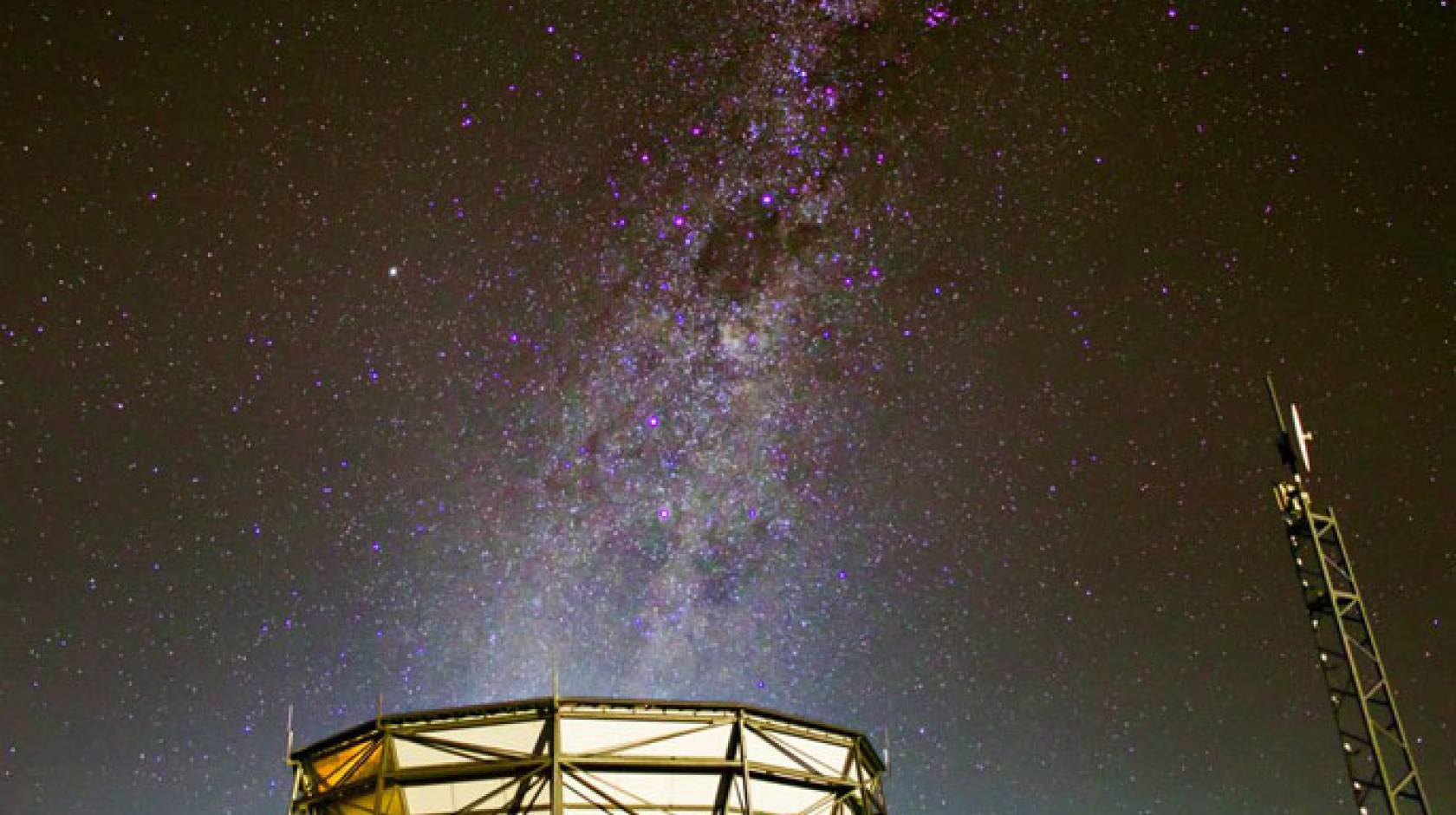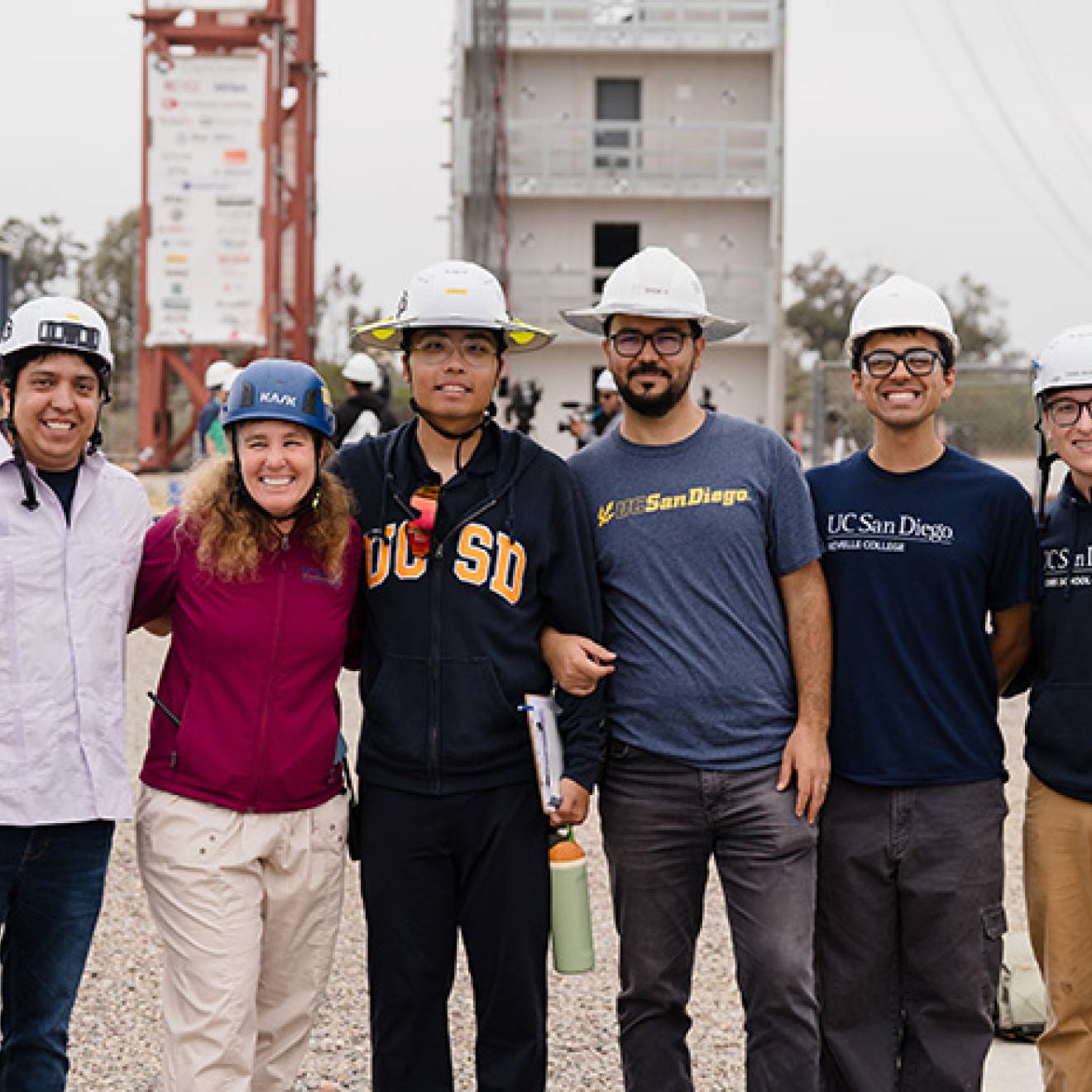Kim McDonald, UC San Diego

In an effort to probe the first few moments of time after the Big Bang some 13.8 billion years ago, a consortium of researchers, including astrophysicists from the University of California San Diego, is planning a new observatory in Chile’s Atacama Desert to measure the cosmic microwave background, or CMB.
The $40 million initiative, known as the Simons Observatory, was announced on Thursday and is being funded by grants from the Simons Foundation and the Heising-Simons Foundation.
“This is an ambitious project with the potential to greatly expand our understanding of the universe, and it wouldn’t be possible without private support,” said UC San Diego Chancellor Pradeep K. Khosla. “We are deeply grateful to the Simons Foundation and the Heising-Simons Foundation for their partnership. Philanthropy is increasingly important to fuel basic science research and pursue high-risk, high-reward experiments.”
Building on two existing facilities, the Atacama Cosmology Telescope and the Simons Array, the new funding will support the development and deployment of new technologies to explore the cosmic microwave background, a window to the physics of the earliest universe, the nature of dark energy, the properties of neutrinos and how gravity imposed structure on the universe. The project involves researchers and support from UC San Diego; University of Pennsylvania; University of California, Berkeley; Princeton University; Lawrence Berkeley National Laboratory; and University of Wisconsin at Madison.
“The generosity of this award is unprecedented in our field, and will enable a major leap in scientific capability,” said Brian Keating, a professor of physics at UC San Diego’s Center for Astrophysics and Space Sciences and the current project director. “We have this beautiful edifice of everything that’s happened in the universe and the laws of physics since about a second after the Big Bang. But we want to go back orders of magnitude—perhaps as many as 30 orders of magnitude farther back in time or higher in temperature. We’re trying to understand the nature of matter and energy and understand the first moments of the universe, potentially what brought it into existence.”

Credit: Nathan Sebor/UC San Diego
"World-class instrument for decades to come"
Mark Thiemens, dean of UC San Diego’s Division of Physical Sciences, added: “This new observatory follows the great tradition of astrophysical discovery at UC San Diego and will enable astronomers to have a world-class instrument for decades to come.”
A primary objective of the project is to search more than half the sky for the signature of the gravitational waves generated immediately following the Big Bang. Gravitational waves are created by violent expansion in the fabric of space called inflation, a leading theory about the beginning of the universe. The waves induce faint but characteristic polarization patterns in the CMB at radio wavelengths that can be detected by specialized telescopes and cameras.
“While patterns that we see in the microwave sky are a picture of the structure of the universe 380,000 years after the Big Bang, we believe that some of these patterns were generated much earlier, by gravitational waves produced in the first moments of the universe’s expansion,” said Mark Devlin, a professor of astronomy and astrophysics at the University of Pennsylvania and the current project spokesperson. “By measuring how the gravitational waves affect electrons and matter 380,000 years after the Big Bang we are observing fossils from the very, very early universe.”
The new Simons Observatory will be an important step toward an ultimate experiment aimed at extracting the full measure of cosmological information in the cosmic microwave background fluctuations accessible from the ground.
In addition to support from the Simons Foundation and Heising-Simons Foundation, major matching contributions are being made by the University of Pennsylvania, Princeton, UC San Diego, UC Berkeley, and the Lawrence Berkeley National Laboratory, part of the Department of Energy. The site in Chile is located on the west slope of the Andes in the Parque Astronómico, which is administered by the Comisión Nacional de Investigación Científica y Tecnológica.
The Simons Foundation is a longtime supporter of UC San Diego’s quest to understand the early universe. Co-founded in New York City by Jim and Marilyn Simons, the foundation’s mission is to advance the frontiers of research in mathematics and the basic sciences. In addition to this latest grant, the foundation helped fund the original three-telescope Simons Array at UC San Diego’s James Ax Observatory in 2012.
The Heising-Simons Foundation is a family foundation located in Los Altos, Calif., dedicated to advancing sustainable solutions in the environment, supporting groundbreaking research in science, and enhancing the education for the nation's youngest learners.

